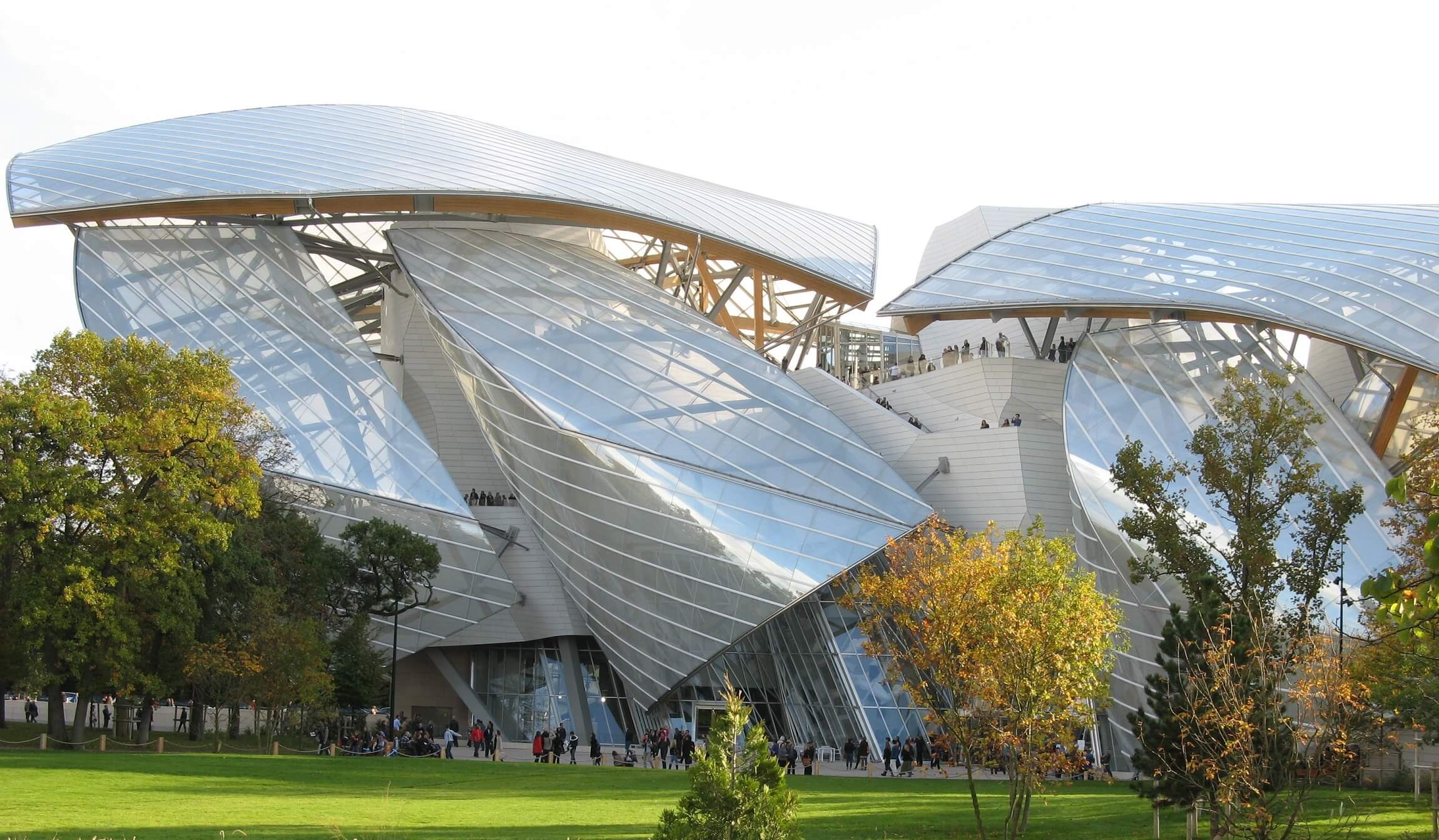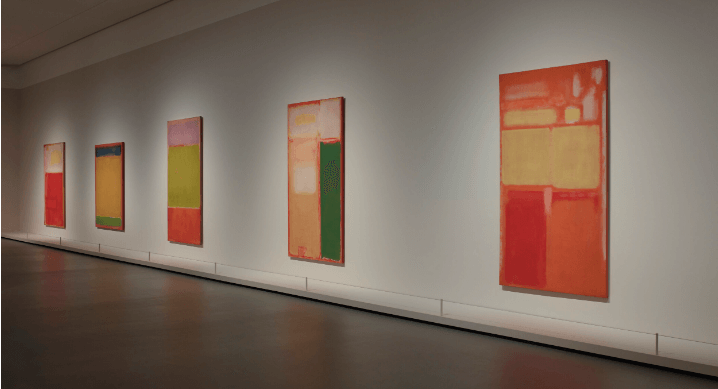Rediscovering the Genius: Fondation Louis Vuitton’s Tribute to Mark Rothko

Fondation Louis Vuitton
In the bustling heart of Paris, an extraordinary journey awaits those seeking to be captivated by the kaleidoscopic world of an artistic maestro. Step into the realm of Fondation Louis Vuitton between October 18, 2023, and April 2, 2024, and let the vivid strokes of Mark Rothko’s genius transport you through a visual symphony, meticulously curated by his son, Christopher Rothko, and artistic director Suzanne Pagé. A tribute of unparalleled grandeur, this retrospective, the first of its kind in France since 1999, orchestrates a harmonious convergence of 115 masterpieces sourced from prestigious collections worldwide.

Mark Rothko, Light Cloud, Dark Cloud, 1957
Mark Rothko’s art transcends the canvas, inviting viewers into a wordless dialogue. The exhibition at Fondation Louis Vuitton allows for a fresh interpretation of his work, unveiling its true plurality. The artist’s commitment to questioning, a desire for silent communication with the viewer, and his refusal to be labeled merely a “colorist” come alive in this immersive experience.
Presented until the spring of the following year, the retrospective not only impresses but also raises questions about Rothko’s visibility in France. Christopher Rothko suggests that the artist’s limited time in Paris during his lifetime and his strong ties to the UK and Europe may have contributed to this. Only two Rothko paintings currently reside in the vast collection of the Centre Pompidou, a gap the Fondation Louis Vuitton seeks to fill with this monumental exhibition.

Left to right:Mark RothkoNo. 3 (Untitled / Orange), 1967Untitled, 1967
Mark Rothko’s quest was not merely to create paintings but to craft emotional symphonies that could bring people to tears.
“I’m interested only in expressing basic human emotions—tragedy, ecstasy, doom, and so on. And the fact that many people break down and cry when confronted with my pictures shows that I can communicate those basic human emotions….If you…are moved only by their color relationships, then you miss the point.”
Rothko’s power to evoke tears is nothing short of magical, plunging us into the depths of human emotions and states of being. For me, encountering his art was not just an observation; it was a visceral experience that touched the very core of my existence. It became a personal dialogue with the canvas, a silent conversation that resonated with my innermost feelings.
From the moment I laid eyes on Rothko’s creations, I was enveloped in genuine admiration. His abstract expressionism’s apparent simplicity and simultaneous sophistication left me in awe. Each canvas, a vessel of concept, feeling, and emotion, made the encounter exceptional. Rothko grants the viewer the freedom to define, feel, and scent, fostering a unique, personal connection that goes beyond the confines of traditional art appreciation.

Tatiana Soubbotina next to Mark Rothko No. 3, 1967
The true enchantment lies in the amalgamation of colors, the dance of colored blocks that cast a profoundly unique spell. The blending of colors, weaving a dimension into the canvas, stirred in me some calmness and excitement—a feeling beyond precise definition.
Rothko’s meticulous attention extended to the presentation of his work—no framing, positioned lower to the floor, at eye level with the viewer, providing an intimate experience. This deliberate setting isn’t just an aesthetic choice; it’s an invitation into a more profound connection, a deeper appreciation.
“I paint very large pictures. I realize that historically the function of painting large pictures is painting something very grandiose and pompous. The reason I paint them, however, — I think it applies to other painters I know -, is precisely because I want to be very intimate and human. To paint a small picture is to place yourself outside your experience, to look upon an experience as a stereopticon view or with a reducing glass. However, you paint the larger picture, you are in it. It isn’t something you command.”

Left to right :Mark RothkoNo. 8, 1949Untitled (Blue, Yellow, Green on Red), 1954No. 7, 1951No. 11 / No. 20, 1949No. 21 (Untitled), 1949
The odyssey begins with an intimate gaze into Rothko’s formative years, where his canvases portray scenes of 1930s New York subway life and urban landscapes. As the narrative unfolds, the artist’s evolution becomes palpable, giving way to a repertoire inspired by ancient myths and surrealism during the war, resonating with the tragic dimension of human existence.
In 1946, Rothko undergoes a transformative shift towards abstraction, marking the Multiforms phase. Chromatic masses suspended in equilibrium characterize this period, leading to the iconic “classic” works of the 1950s. Rectangular forms, rhythmic binaries or ternaries, and a palette spanning a myriad of hues define this era.
A captivating chapter unravels in 1958 when Rothko receives a commission for murals at the Four Seasons restaurant in the Seagram Building. Fate takes a turn, with the artist retaining the entire series in 1969, and today, nine of these crimson-hued masterpieces find a home at the Tate Gallery, receiving a special spotlight in this exceptional exhibition.

Left to right :Mark RothkoUntitled, 1969Untitled, 1969Untitled, 1969Sculptures :Alberto GiacomettiL’Homme qui marche I, 1960Grande Femme III, 1960
The narrative extends to Rothko’s impact on institutions, notably the Phillips Collection, which bestowed upon him the first “Rothko Room” in 1960. The ’60s witness Rothko responding to new commissions, including the renowned Rothko Chapel in Houston. Dark tones and subtle contrasts in his later works challenge simplistic interpretations, showcasing the interplay of shadows and light.
Despite embracing darker tones in the late ’50s, Rothko never entirely abandoned his vibrant palette. The exhibition reveals gems from 1967 and an unfinished red masterpiece from his studio, displayed in the lofty realms of Frank Gehry’s architectural masterpiece—an environment akin to Rothko’s unrealized vision for a UNESCO commission.

Mark Rothko, Slow Swirl at the Edge of the Sea, 1944
Confronting Rothko’s work wasn’t a passive act; it was an immersive journey within my own soul—a personal odyssey within the confines of an art gallery. It became an intimate experience, leaving an indelible mark and instilling a profound desire to revisit, to continue the exploration of my own emotional landscape through Rothko’s canvases.
Mark Rothko‘s retrospective at Fondation Louis Vuitton promises a journey through time and color, offering a chance to witness the evolution of an artistic genius. Don’t miss the opportunity to immerse yourself in the hues of Rothko’s masterpieces, on display from October 18, 2023, to April 2, 2024. Step into the world of an abstract maestro, and let the colors tell you a story—unspoken yet profoundly felt.

